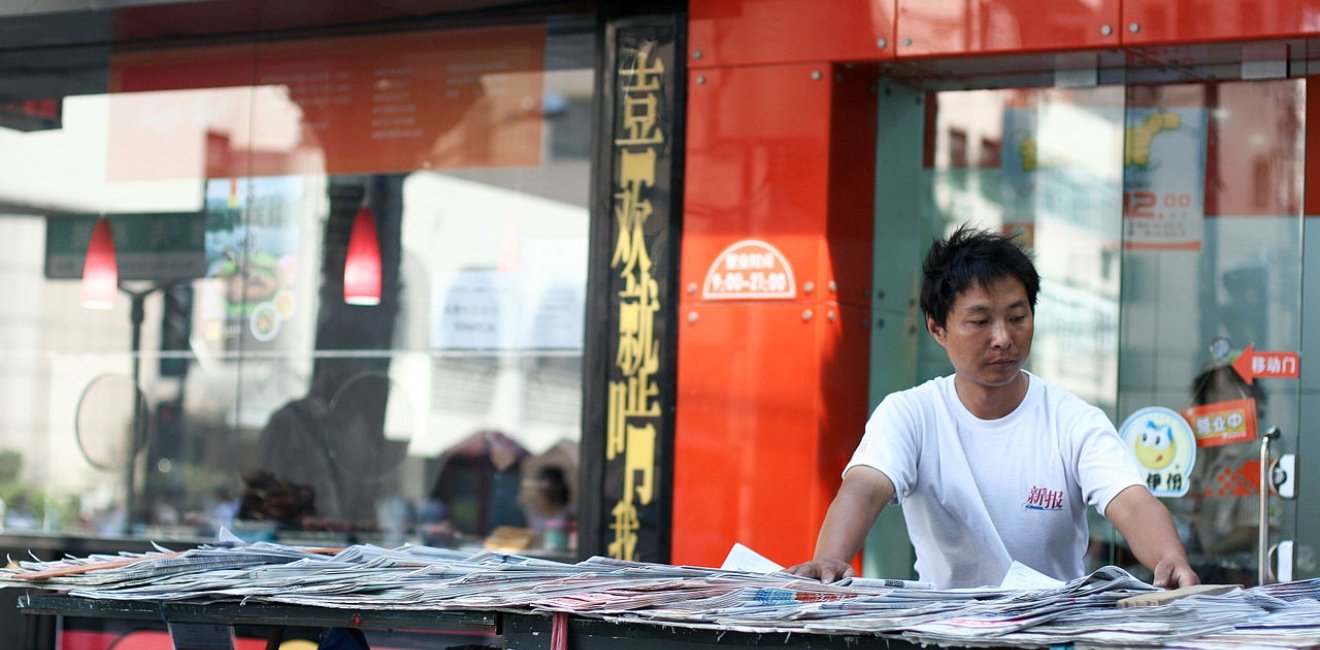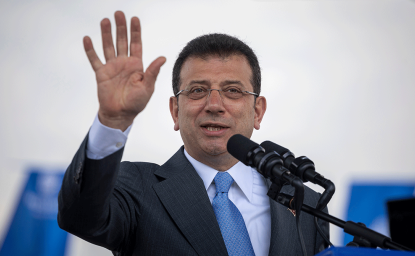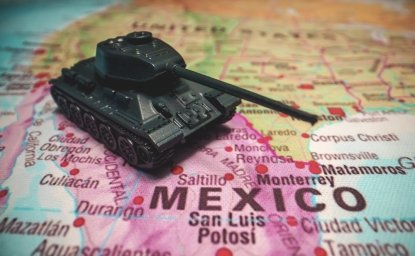Ever since Xi Jinping became general secretary of the Chinese Communist Party (CCP) in 2012, the government has tightened social, political, and economic controls in China and placed a renewed emphasis on CCP ideology. Xi set this new direction in a secret speech in December 2012 when he raised the example of the breakup of the Soviet Union, which he said was caused by a crisis of belief—the Soviet people had lost faith in the Communist Party. In another speech, in January 2013, Xi Jinping was reported as saying that “beliefs and faith” are the “calcium” of party members and without them they will “develop rickets.”1 A leading Chinese media specialist, Professor Zhan Jiang, has described the current situation in China as “the worst time for media and internet freedom since the start of the new century.”2 But to what extent are Xi’s measures a continuance of policies established by his predecessors Jiang Zemin (1989–2002) and Hu Jintao (2002–2012)? What is the agenda behind these changes and what do they tell us about the CCP’s hold on power? Do they reflect a new direction for CCP media management, or is it perhaps a case of plus ça change, plus c’est la même chose?3
This paper will answer these questions by examining the changes in media control under Xi Jinping in the context of the CCP’s longstanding media policies and efforts to strengthen governance of the public sphere under previous leaders. In China, all forms of both traditional and new media are controlled within the CCP’s propaganda and ideology xitong (宣教系统, xuanjiao xitong), a policy grouping covering all aspects of the Chinese public sphere and all forms of mass communication. The CCP regards propaganda and thought work as one of its core tasks. Thus any significant change to the way the media are managed in China is always indicative of significant changes going on in the wider political environment in China and the state of social and political control in the country. This paper forms part of a long-term project studying the modernization of China’s propaganda system and is based on fieldwork trips to China in 1998, 1999, 2000, 2001, 2002–2003, 2004, 2005–2006, 2007, 2010, 2012, 2013, 2014, and 2016, where I conducted formal and informal interviews with propaganda officials, theorists, policymakers and bureaucrats, academics, journalists, dissidents, and ordinary Chinese citizens, while scouring classified and non-classified propaganda policy documents, secondary sources in Chinese and English, and relevant information from the Chinese and foreign news media.
The Role of the Media in China
The CCP’s approach to the role of the media in society has been shaped by the writings of Marx, Engels, and Lenin. Marxist-Leninist theories of the media continue to be a major reference point for those seeking either media liberalization in China4 or a strengthening of party controls.5 Marx and Engels viewed the media as a tool of the ruling class.6 They were both vehemently opposed to censorship, even in the communist press. Marx famously wrote in 1842, “The character of the censored press is the characterless monster of unfreedom, a civilized monster, a perfumed abortion.”7 In contrast, Lenin took a more absolutist position on media freedom. In his 1901 essay “What Is to Be Done?” he outlined the task of a communist-led media, stating that “A newspaper is not only a collective propagandist and a collective agitator, it is also a collective organizer.”8Lenin was famously scathing of “freedom of criticism” within the workers’ movement, seeing it as undermining unity.9
In the Mao era the CCP more often leaned toward the Leninist view of the media. While freedom of speech and the press are enshrined in the Constitution of the People’s Republic of China (PRC), the news media have a crucial role in the CCP’s approach to political and social control. The CCP has traditionally described the Chinese news media as the “eyes, ears, tongue, and throat of the party” (党的耳目喉舌, dang de ermu houshe)—a Leninist interpretation of the media’s role.
The Chinese media are frequently a weathervane during times of political turmoil or power struggles. In 1989, the Chinese media had an important role as a catalyst in the six weeks of popular protest that culminated in the violent crackdown of June 4, 1989. One of the earliest signs that the final crackdown was coming was on the night of June 3, when the People’s Liberation Army took over the People’s Daily editorial offices and CCTV studios and removed the journalists and editors who had provided positive coverage of the protests.
However, in November 1989, CCP General Secretary Jiang Zemin broke new ground when he redefined the Chinese media as the tongue and throat of the party, government, and the people.10 The introduction of this extra word was meant to signify that the media would be permitted a limited public watchdog role; in Chinese the term used for this is 舆论监督 (yulun jiandu). However the Chinese term—it means “public opinion oversight”—has very different connotations from that of “public watchdog.” In June 2003, the Central Propaganda Department expressly forbade the use of the terms “Fourth Estate” or the “theory of the Media as a Tool of the Public Sphere” (a reference to Habermasian ideas on the public sphere)11 to describe the media in China.12 Multiple internal directives have been written on exactly what this new task meant for the Chinese media. In 2005 the Central Propaganda Department stated: “Public opinion oversight is an important channel for the people to oversee state and societal affairs via the news media.”13 In the years that followed, some actors within the Chinese media, within the political system, and among the Chinese public have persistently tried to push the boundaries of the meaning of “public opinion oversight” to suit their own agendas.
The core justification for the “public opinion oversight” role of the Chinese media is to strengthen party rule. The CCP-controlled Chinese news media have a long history of publishing investigative journalism in classified materials (参考资料, cankao ziliao). But, following Jiang Zemin’s new interpretation of the Chinese media’s role, trusted sections of the Chinese media such as the CCTV 1 news program 焦点访谈 (Focuspoint, jiaodian fangtan) were permitted to air investigative reports to the public. The stories always had to have a happy ending; the criminals were caught, and the abuses were brought to an end by state authorities.
Since then, the Chinese media’s watchdog role has waxed and waned for some two decades, depending on the political climate. CCP leaders regard investigative reports as a useful release of tension for politically sensitive issues that stir up public opinion.14 Putting investigative reports in the public domain is a means to mobilize public support both against the social evils exposed—child trafficking is one recent contemporary example—and to reduce the incidence of such crimes.
In addition to the new “public opinion oversight” role, throughout the 1990s, reflecting the relatively liberal media environment, many Chinese journalists and journalism educators repeatedly demanded a clearer separation between news (新闻, xinwen) and propaganda (宣传, xuanchuan), in other words demanding a relaxation of party media controls. Chinese journalism education in this era focused on teaching journalism skills and tended to ignore or downplay political education. In 2003, Liu Yunshan, then head of the Central Propaganda Department, reminded reporters of the boundaries of the news versus propaganda debate, stating that “one of the primary tasks of journalists is to make people loyal to the CCP.”15
And yet despite the limits on reform in the media sector, in the period from 1989 to the present the Chinese media sector has undoubtedly undergone a top-down, officially sanctioned commercialization, expansion, and liberalization on an unprecedented scale. The censorship boundaries have steadily expanded, although core areas—such as “the three Ts”: Taiwan, Tibet, and Tiananmen—remain no-go zones. Alongside this expansion of the media sector, the CCP has continually refined and modernized its system of media management. It has constantly monitored the sector and responded to any new challenges, such as the rise of new media and corresponding decline of the traditional media. From 1989 to the present, the CCP has continued to set boundaries on the limits of discussion. By means of periodic crackdowns, the government has sought to keep the Chinese traditional and non-traditional media on a long leash, while permitting their commercial expansion.
The full text of this article is available at Taylor & Francis.
Notes
1. Wang Xiangkun, “Lixiang xinnian shi gongchandang ren jingshen shang de ‘gai’” (Ideals and Faith Are the “Calcium” of Party Members), Renmin ribao, December 5, 2013, http://theory.people.com.cn/n/2013/1205/c40537-23757123.html, accessed March 20, 2015.
2. Angus Grigg, “How China Stopped Its Bloggers,” Australia Financial Review, July 4, 2015, www.afr.com/technology/social-media/how-china-stopped-its-bloggers-20150703-gi34za, accessed July 4, 2015.
3. “The more things change, the more they stay the same.” An epigraph by Jean-Alphonse Baptiste-Karr in his weekly magazine Les Guêpes, January 1849.
4. Zhan Jiang, “Makesi zhuyi xinwen ziyou guan zai tan” (Revisiting Marxist Theories of Press Freedom), Renminwang, December 2, 2004, http://media.people.com.cn/GB/22100/41466/41467/3027978.html, accessed July 23, 2015.
5. The current campaign to promote theories of Marxist journalism was launched in September 2013. CCTV has a web page dedicated to the campaign. See www.xinhuanet.com/newmedia/cctv_xwg/index.htm, accessed July 24, 2015.
6. Karl Marx and Frederik Engels, “The German Ideology,” cited in Michael Curran and Janet Woollacott, “The Study of the Media: Theoretical Approaches,” in Culture, Society and the Media, eds. Michael Gurevitch, Tony Bennett, James Curran, and Janet Woollacott (London: Methuen, 1982), 22.
7. Karl Marx, “On Freedom of the Press,” 1842, https://marxists.anu.edu.au/archive/marx/works/1842/free-press/ch06.htm.
8. V. Lenin, “What Is to Be Done?” www.marxists.org/archive/lenin/works/1901/witbd/v.htm.
9. Lenin, “What Is to Be Done?”
10. Jiang Zemin, “Guanyu dang xinwen gongzuo de jige wenti,” Shisanda yilai zhongyao wenxian xuanbian, vol. 2 (Beijing: Renmin chubanshe, 1991), 770–71.
11. Jürgen Habermas, The Structural Transformation of the Public Sphere: An Inquiry into a Category of Bourgeois Society, trans. Thomas Burger (Cambridge MA: MIT Press, 1989).
12. ‘媒体公器论’; ;第四权利’. NBTX 13 (2003): 13.
13. Neibu tongxin (hereafter NBTX) 1 (2005): 1.
14. NBTX 15 (2007): 18.
15. NBTX 15 (2003): 4.





